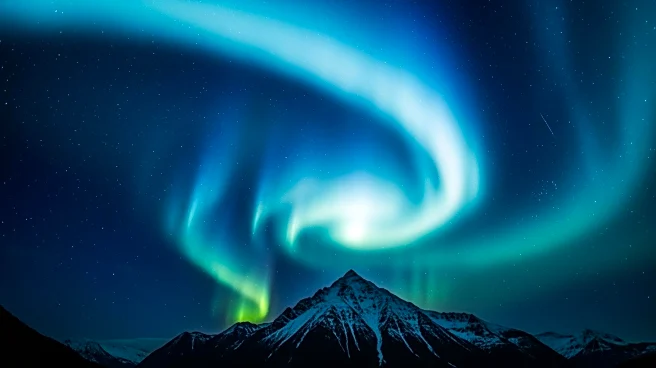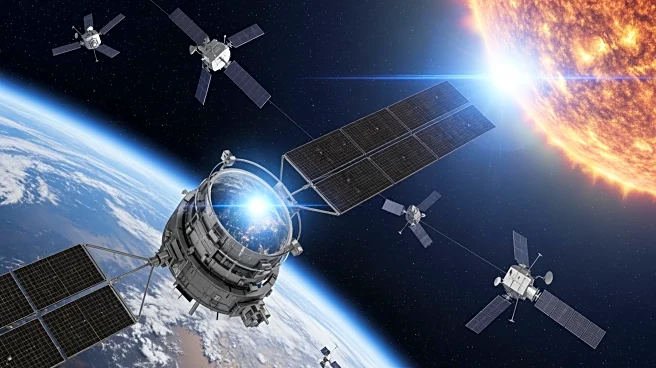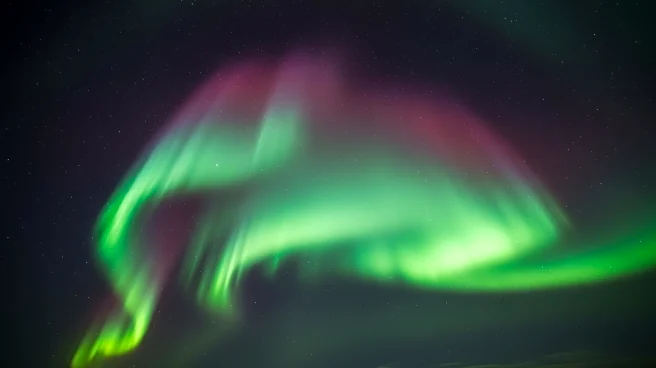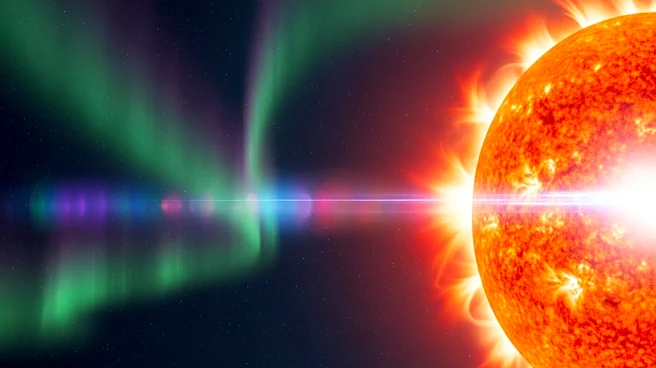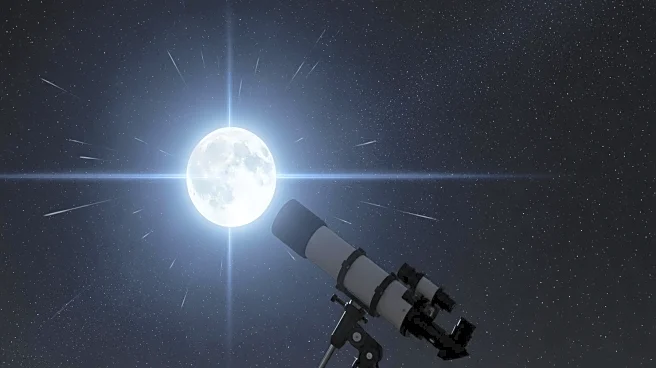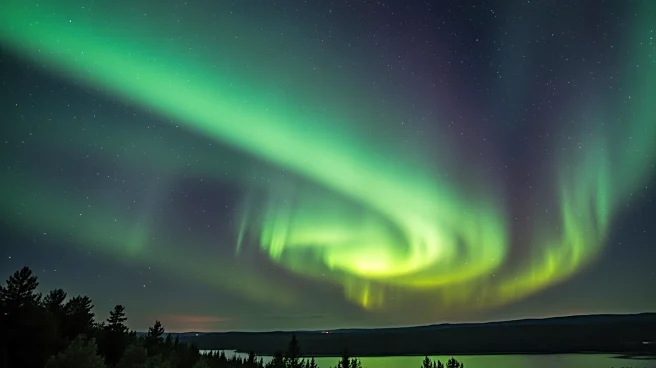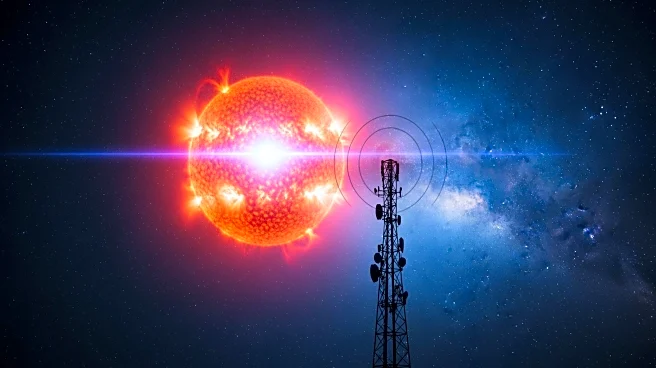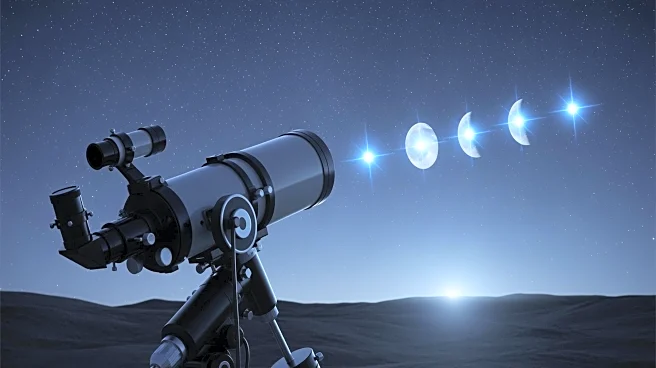What's Happening?
A team of scientists in northern Sweden has observed a blue aurora at an unprecedented altitude of approximately 124 miles above Earth's surface. Using an ultrasensitive hyperspectral camera, the researchers were able to measure the aurora's altitude with
precision, providing new insights into the interaction between light, chemistry, and charged particles during the transition from night to day. The study, led by Professor Katsumi Ida from the National Institute for Fusion Science in Japan, focused on the blue aurora caused by nitrogen molecular ions, which light up when energized. The findings challenge existing models that predict lower altitudes for such emissions, suggesting that the morning ionosphere may boost the blue aurora higher than previously expected.
Why It's Important?
This discovery has significant implications for understanding the ionosphere and space weather phenomena. The ability to measure auroral altitude with a single camera offers a new method for studying atmospheric changes without the need for extensive camera networks. The findings could improve models used to predict space weather, which affects radio communications and satellite operations. By refining our understanding of nitrogen and oxygen ion chemistry, scientists can enhance forecasts for conditions that impact polar aviation and satellite drag estimates. The research also opens up possibilities for more detailed studies of ionospheric dynamics during twilight, which could lead to better predictions of atmospheric behavior.
What's Next?
Future research will focus on targeted spectroscopy and coordinated radar measurements to further explore the dynamics of the blue aurora. Scientists aim to determine whether chemical production or ion movement is the primary factor influencing the aurora's altitude. By pairing hyperspectral cameras with instruments that can resolve line shifts, researchers hope to develop a comprehensive diagnostic suite for studying auroral phenomena. Additionally, a global network of hyperspectral stations could track the migration of the blue aurora across different regions, providing valuable data for space weather models and satellite operations.
Beyond the Headlines
The study highlights the potential for using natural atmospheric phenomena as a tool for scientific exploration. The innovative use of a single camera to measure auroral altitude demonstrates how existing technology can be adapted for new scientific purposes. This approach could lead to more cost-effective and efficient methods for studying the upper atmosphere, with applications in both research and practical fields such as telecommunications and aviation.
